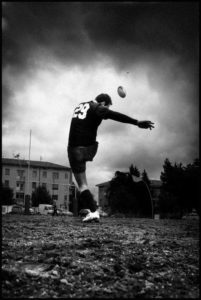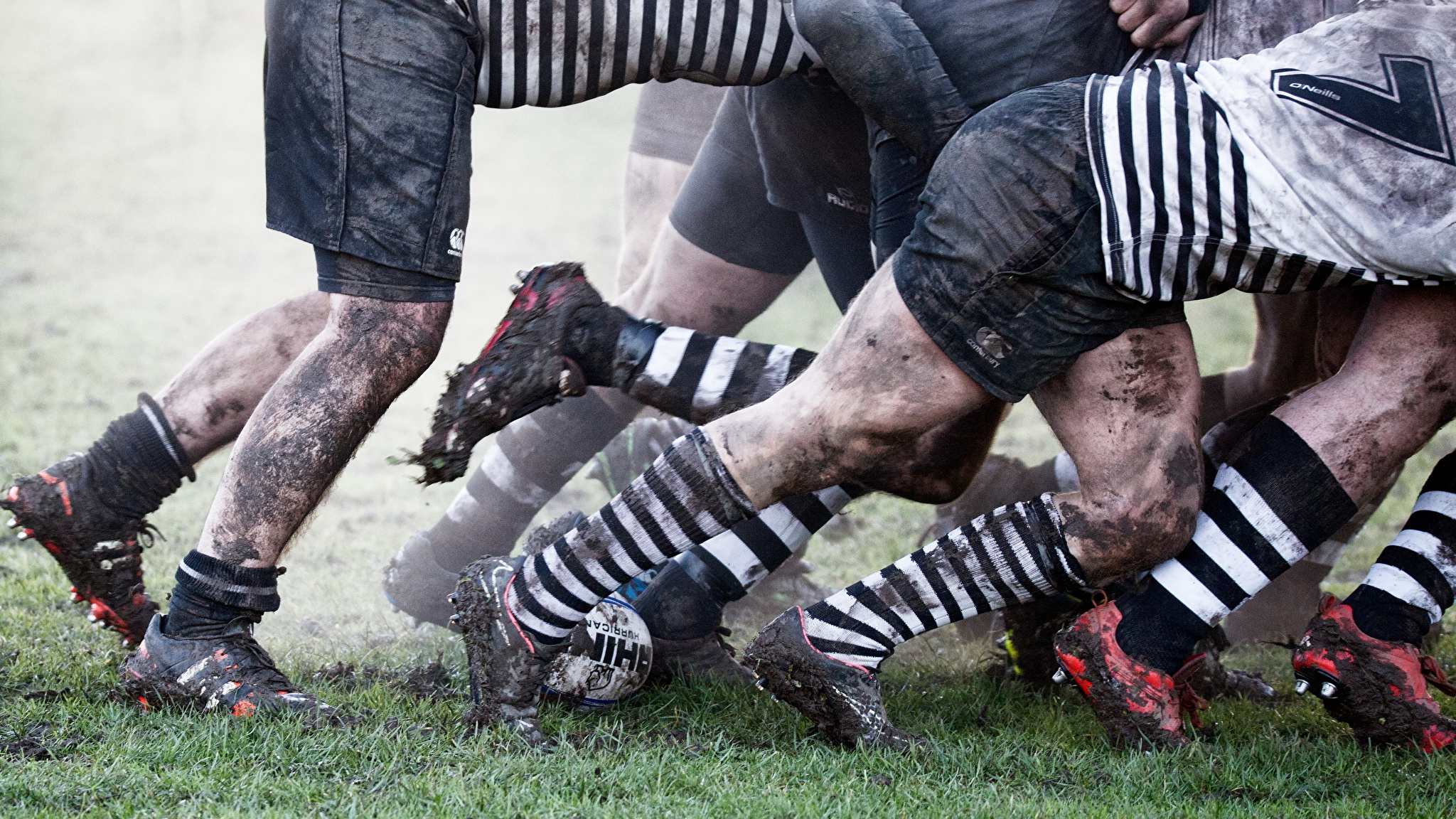The Evolution of Rugby Union
When Rugby Union became professional in 1995 so too did the style of play, with players becoming bigger, stronger, and faster. This increase in physicality has influenced growing research on the science behind the sport, increasing our knowledge on the demands of the game. Regardless of the level or position played, Rugby is a full-contact field sport which requires high levels of speed, agility, strength and power to be successful in a multifaceted game consisting of jumping, pushing, pulling, throwing, wrestling, tackling and sprinting.
A rugby team consists of fifteen very individual and distinct positions, each with specific roles, who must anticipate each other’s moves to coordinate as one, moving seamlessly between attack and defence situations. With such diversity in play and player positions, it is no surprise that research reveals a list of intensive physical performance demands experienced during the game of rugby. This knowledge has highlighted the complex and extensive preparation needs of a rugby player, which has not only enhanced the practices of senior players, but has also influenced the growth of development programmes aimed at preparing youth players for the demands of the senior game through long-term player development pathways and academy systems.
Identifying the Difference in Demands
Research shows that overall the physical demands and injury incidence experienced in Rugby increases with age, exposure to play, and level of participation. Additionally, there is a significantly greater measure of body mass, strength and power in senior players when compared to their u20 counterparts, with a progressive increase also noted through u16 and u18 levels. This supports the need for progressive preparation in accordance with both the increasing physical demands of the game, and the enhanced physical qualities needed to withstand these demands.
Identifying the demands of Rugby at junior level, allows the coach to identify what qualities the developing athlete needs to possess in order to participate in, and progress successfully through each level. Not only will this provide essential information for the academy player who has been identified to participate in a professional pathway programme, or the amateur youth player who is transitioning into the adult game, but is also beneficial for the guidance of development of players up to this point.

Meeting these demands
Regardless of a player’s ambitions, based on the Long Term Player Development framework, a late adolescent player (16+) should be at stage 4 – “training to compete”, with sport specific skill development the main focus, having already transitioned through stage 3 – “training to train”, where players consolidate the basic movement skills underpinning the sport (12-16 years). A study examining the conditioning-specific movement tasks and physical fitness of talent identified under 16 players, revealed that most players could not competently perform the movements that underpin Rugby conditioning, and therefore may not be prepared for the transition to the “training to compete” stage. Simply adopting training methods with the aim of preparing future high-performance athletes is a limiting approach; a structured pathway should include the development of all components of fitness which are critical to the demands of rugby, whilst also improving the functional capacity of the players in accordance with the stages of development.
Given the highly demanding physical nature of rugby, substantial emphasis must be directed towards developing physical qualities in players from an early age, and over an extended period of time in order to optimise the training age, which has been shown to be a key factor of success in rugby. However, development programmes for youth players are often based on the practices and demands of the senior game, which doesn’t seem appropriate.
As previously mentioned, the physical demands of the game increase overall as the age of the player increases, however not all physical demands are linear in progression, with some demands decreasing as the structure of play changes from youth to senior level. Therefore, using the demands of the senior game as a guide for progressions in preparation is not appropriate for the adolescent player, where different technical and tactical requirements influence various physical demands.
Available Research
Although the majority of research examines the demands of the senior game, there is some research which provides us with comparative analysis of the demands of the game across a spectrum of adolescent to junior (u20) players, including representative u16, u18 and u20, university level, as well as elite international u20. The details provided are categorised by age due to the age banding of competition, and it must be noted that developmental and maturation differences, as well player experience can influence performance, which will impact the physical demands experienced by individual players. Although this research does not provide us with exact metrics of the physical demands (with the exception of the elite international u20 group), it does provide us with an overview of the changing physical demands throughout the age bands, demonstrating the need for alteration in preparation tactics as the adolescent player advances towards the senior game.
An analysis of this research can be found here.
Learn more about the courses available at Setanta College here, or contact a member of our team below.
Contact form
References
Argus, C. K., Gill, N. D. & Keogh, J. W., 2012. Characterization of the differences in strength and power between dif-ferent levels of competition in rugby union athletes. J Strength Cond Res., 26(10), pp. 2698-704.
Balyi, I. & Hamilton, A., 2004. Long-term athlete development: Trainability inchildhood and adolescence. Windows of opportunity, optimal trainability. Victoria: National Coaching Institute British Columbia & AdvancedTraining and Performance Ltd.
Barden, C. & Stokes, K., 2018. Epidemiology of Injury in Elite English Schoolboy. Journal of Athletic Training, 53(5), pp. 514-520.
Cunningham, D. et al., 2016. Movement Demands of Elite U20 International Rugby Union Players. PLoS ONE, 11(4).
Darrall-Jones, J. D., Jones, B. & Till, K., 2015. Anthropometric and Physical Profiles of English Academy Rugby Union Players. J Strength Cond Res., 29(8), pp. 2086-96.
Deutsch, M., Kearney, J. & Rehrer, N., 2007. Time – motion analysis of professional rugby union players during match-play. Journal of Sports Science, 25(4), pp. 461-472.
Duthie, G. M., 2006. A Framework for the Physical Development of Elite Rugby Union Players. International Journal of Sports Physiology and Performance, 2006;1:2-13, Human Kinetics, Inc.(1), pp. 2-13.
Hansen, K. T., Cronin, J. B., Pickering, S. L. & Douglas, L., 2011. Do force-time and power-time measures in a loadedjump squat differentiate between speed performance and playing level in elite and elite junior rugby union players?. J Strength Cond Res., 25(9), pp. 2382-91.
Haseler, C., Carmont, M. & England, M., 2010. The epidemiology of injuries in English youth community rugby union. British Journal of Sports Medicine, 44(15), pp. 1093-1099.
Hennessy, L., 2019. www.setantacollege.com/irish-rugby-player-pathway/. [Online]
Available at: https://www.setantacollege.com/irish-rugby-player-pathway/
[Accessed 29 May 2020].
Palmer-Green, D. e. a., 2013. Match injuries in English youth academy and schools rugby union: an epidemiological study. AM J Sports Medicine, 41(4), pp. 749-755.
Parsonage, J. R. et al., 2014. ASSESSMENT OF CONDITIONING-SPECIFIC MOVEMENTTASKS AND PHYSICAL FITNESS MEASURES IN TALENTIDENTIFIED UNDER 16-YEAR-OLD RUGBY UNIONPLAYERS. Journal of Strength and Conditioning Research, 28(6), pp. 1497-1506.
Quarrie, K., Hopkins, W., Anthony, M. & Gill, N., 2013. Positional demands of international rugby union: evaluation of player actions and movements. Journal of Science & Medicine in Sport, 16(4), pp. 353-359.
Read, D. et al., 2017. Physical Demands of Representative Match-Play in Adolescent Rugby Union. The Journal of Strength & Conditioning Research, 31(5), pp. 1290-1296.
Read, D. et al., 2017. Movement and physical demands of school and university rugby union match-play in England. BMJ Open Sport Exerc Med, Volume 2(1):e000147.
Robertson, S. & Way, R., 2005. Long-term athlete development. Coaches Rep, Volume 11, pp. 6-13.
Tee, J., Lebatie, F., Till, K. & Jones, B., 2017. Injury incidence and characteristics in South African school first team rugby: A case study. South African Journal of Sports Medicine, 29(1), pp. 1-7.


Leave A Comment